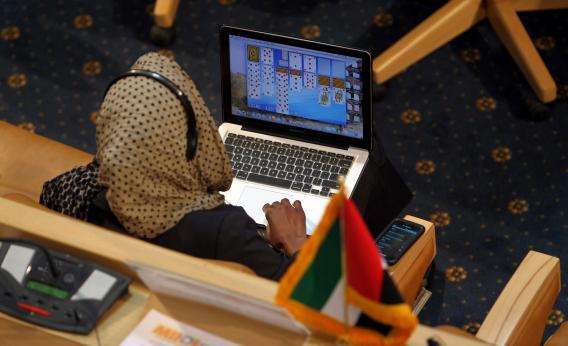What role Twitter really played in the 2009 protests in Iran is debatable. But in the years since, the Internet there has become only more controlled, using a complicated system of censorship and surveillance. There are even plans to create a “Halal” Web that, if implemented, would exist as a nationwide, content censor—filtering out content deemed to be obscene or profane. While the Iranian government has stated that it has all its people’s best interest at heart, Reporters Without Borders has documented how certain people, like the banking elite, would retain access to the whole Internet, creating a particularly acute digital divide.
To shed light on Iran’s Internet situation, Maral Pourkazemi, a London-based graphic designer, crunched data and turned it into beautiful, informative infographics, presented in the three-minute video you’ll find below.
In six panels, Pourkazemi breaks down the Iranian government’s curated/policed Internet experience, the dissident acts of users seeking the free Internet, and the paradoxical nature of the state’s stances on open internet access. In March of 2012, the Supreme Council of Cyberspace was formed to supervise all activity online. The group aims to combat “websites that have been set up to battle our regime, promote worshipping Satan, and stoke sectarian divides,” according to Hamid Shariari, a member of the council.
Pourkazemi hopes that by illustrating this information artistically, the true internet can become more accessible.
“This is the power of design. This is the power of emotionalizing,” she explains. “I wanted to inform people: What is the Iranian internet? Who is the Iranian user?”
